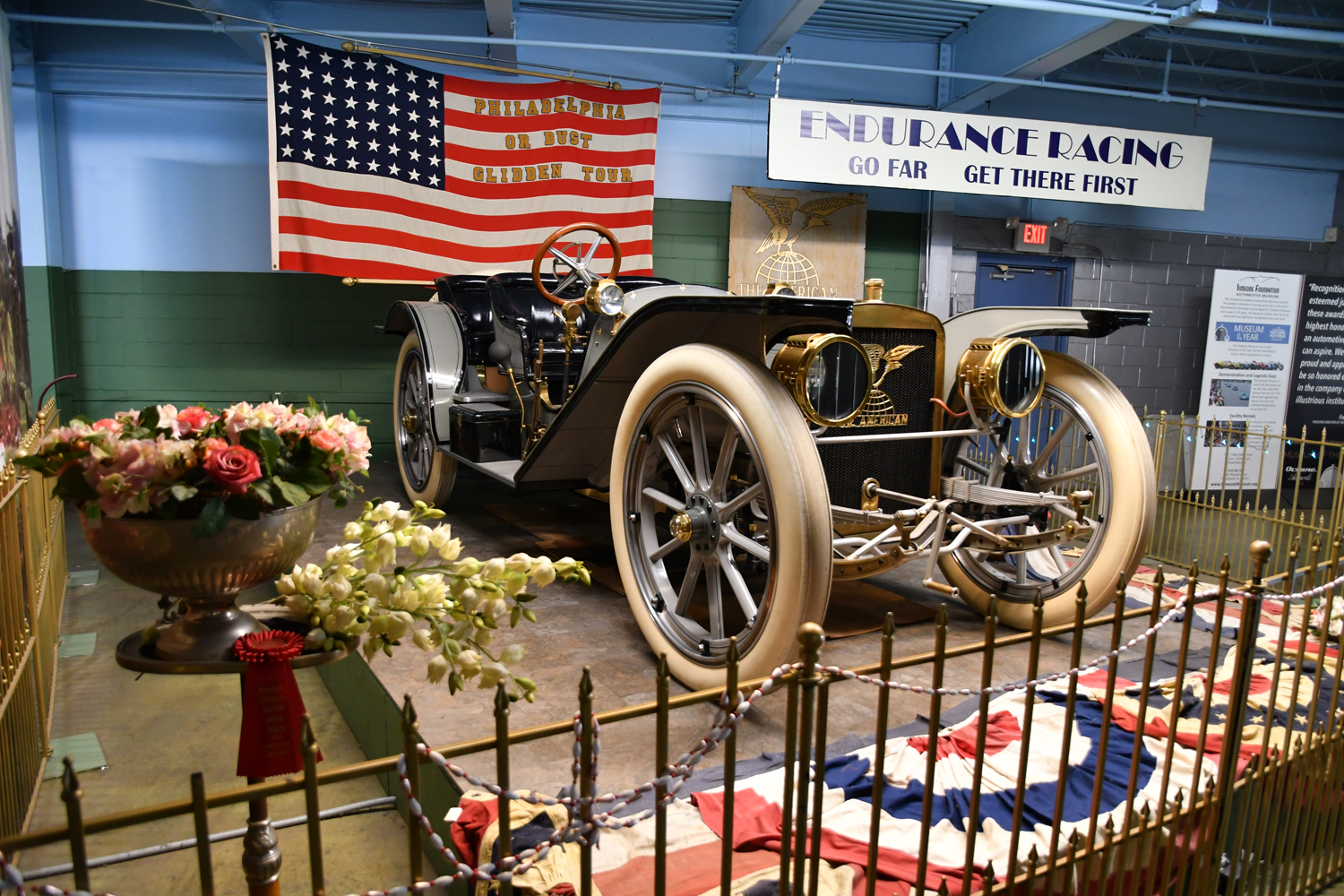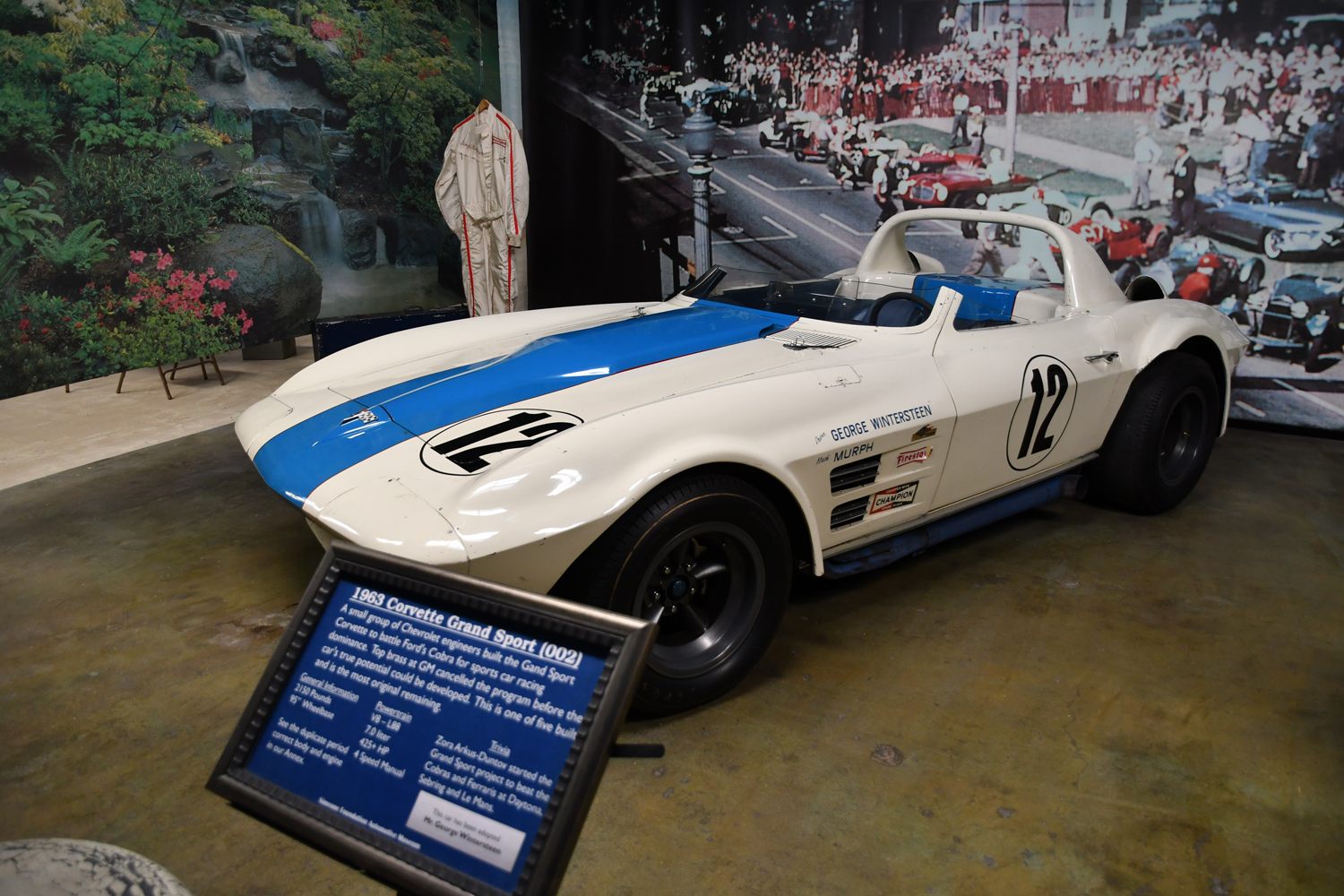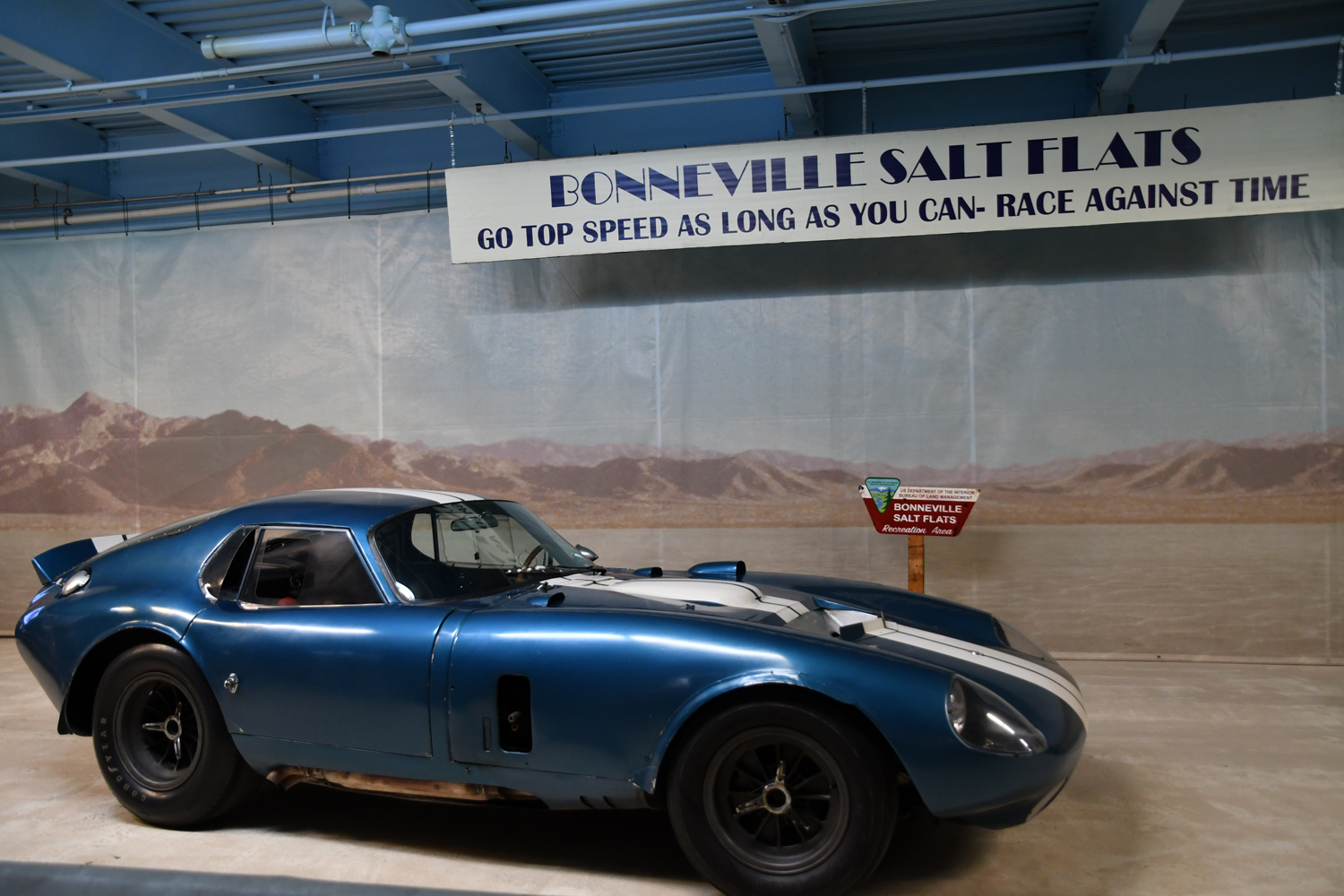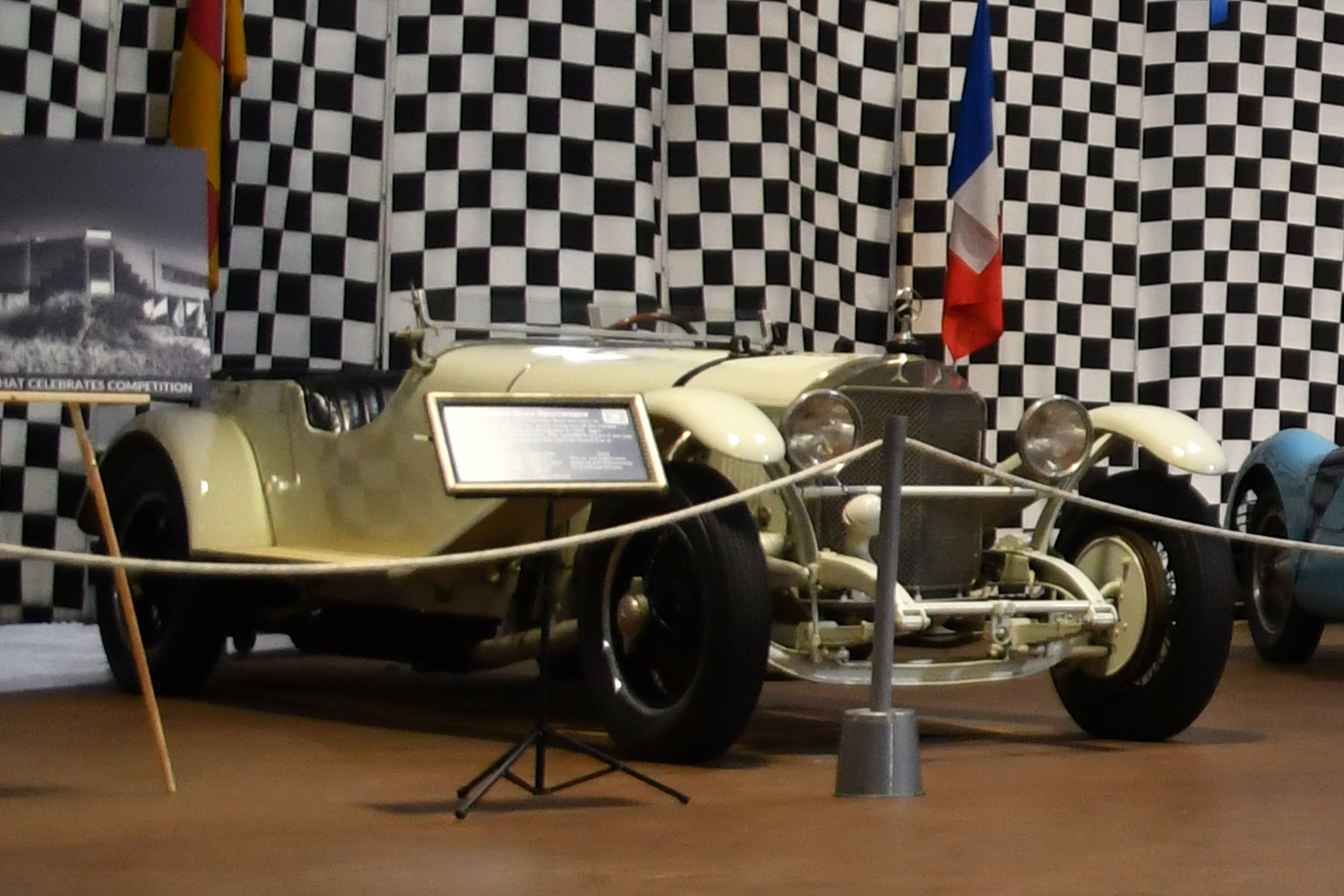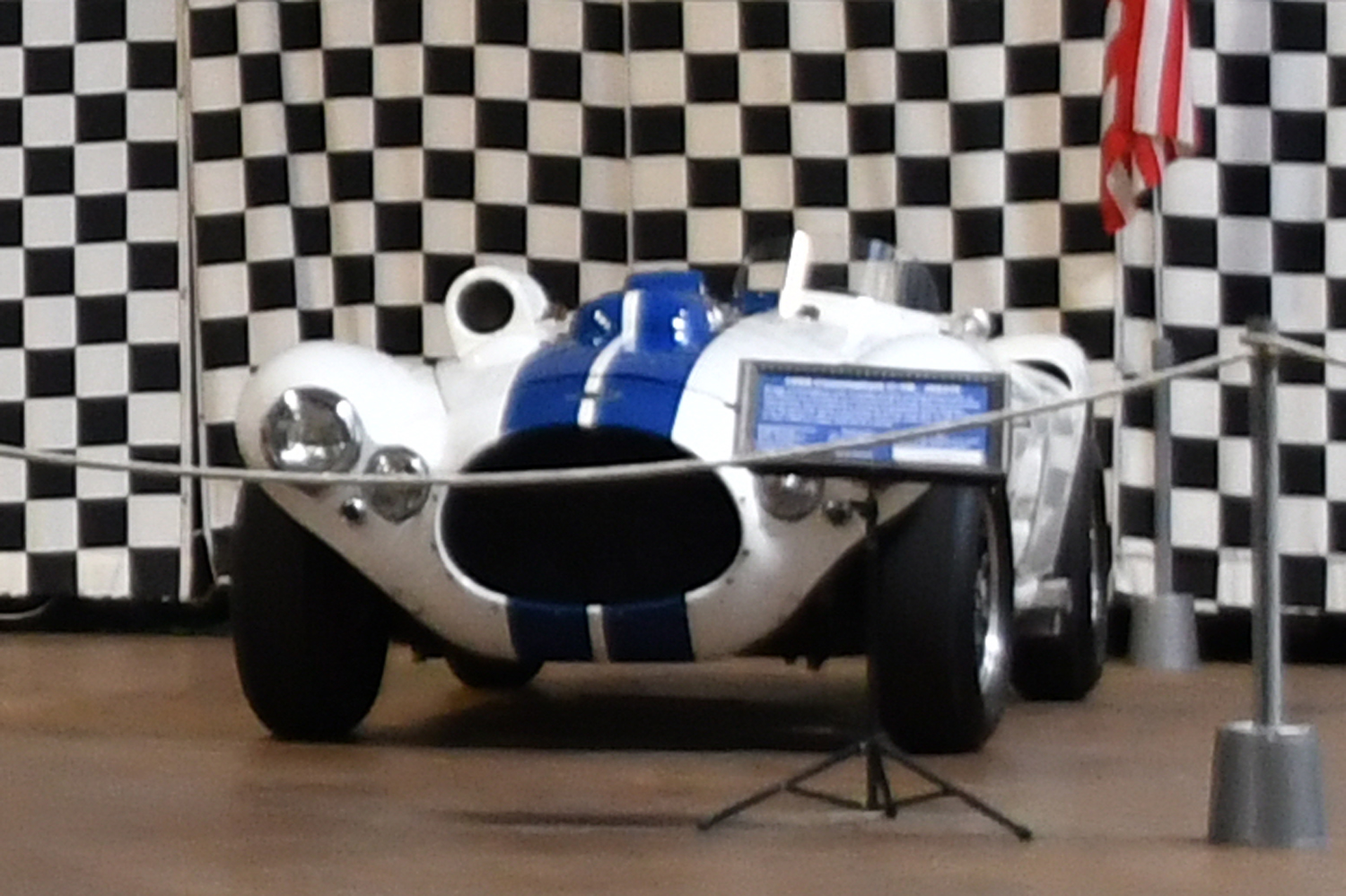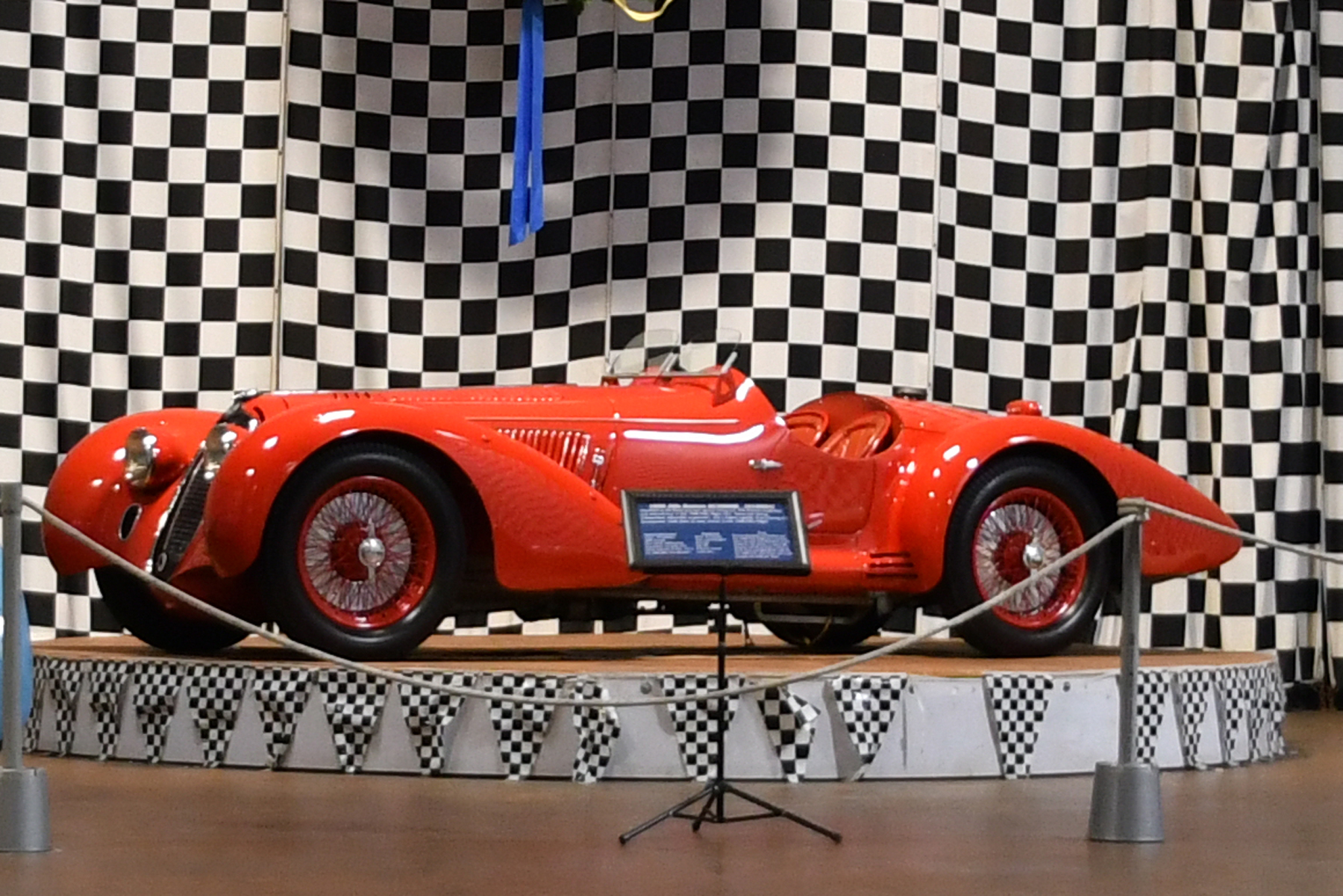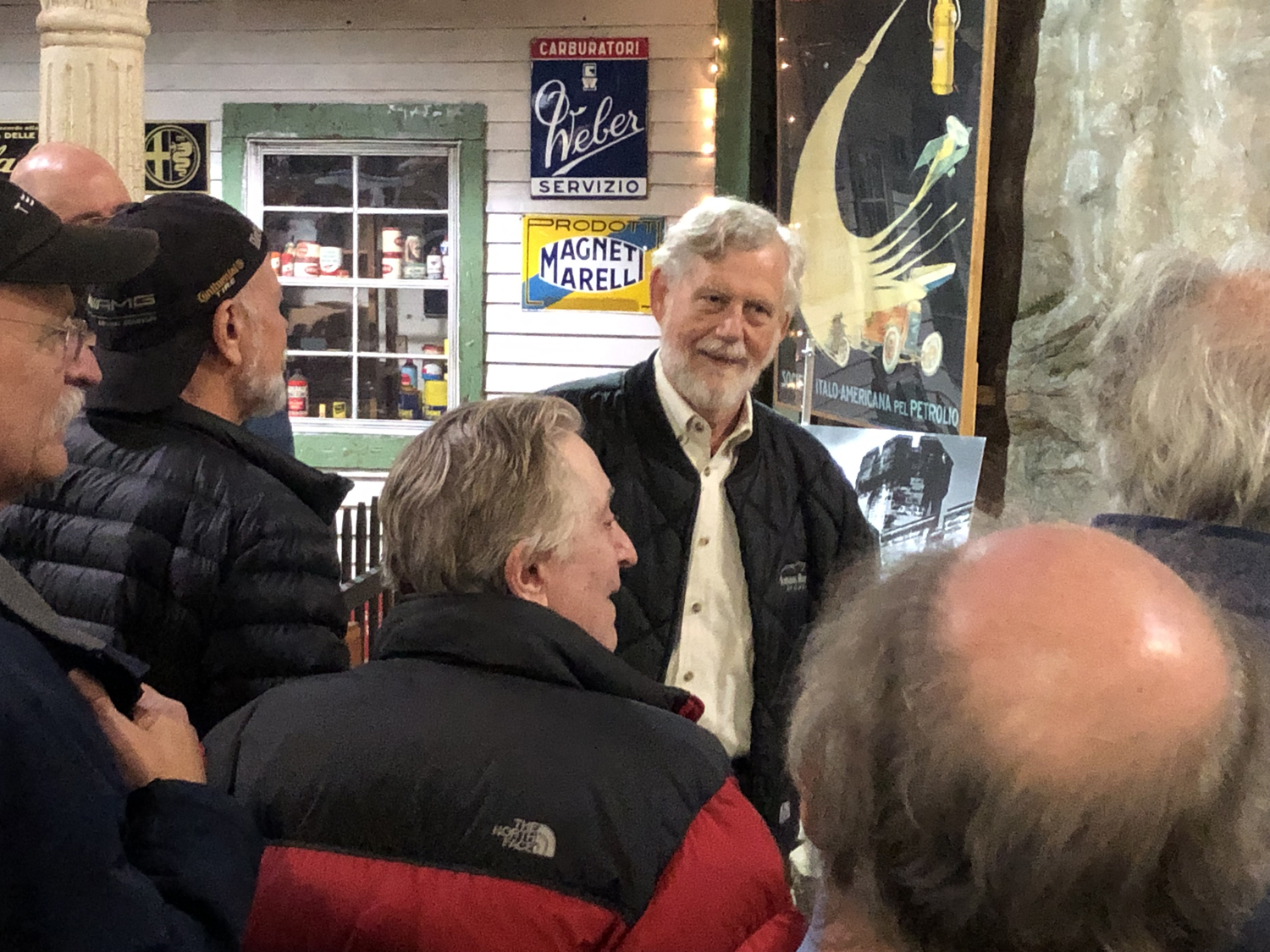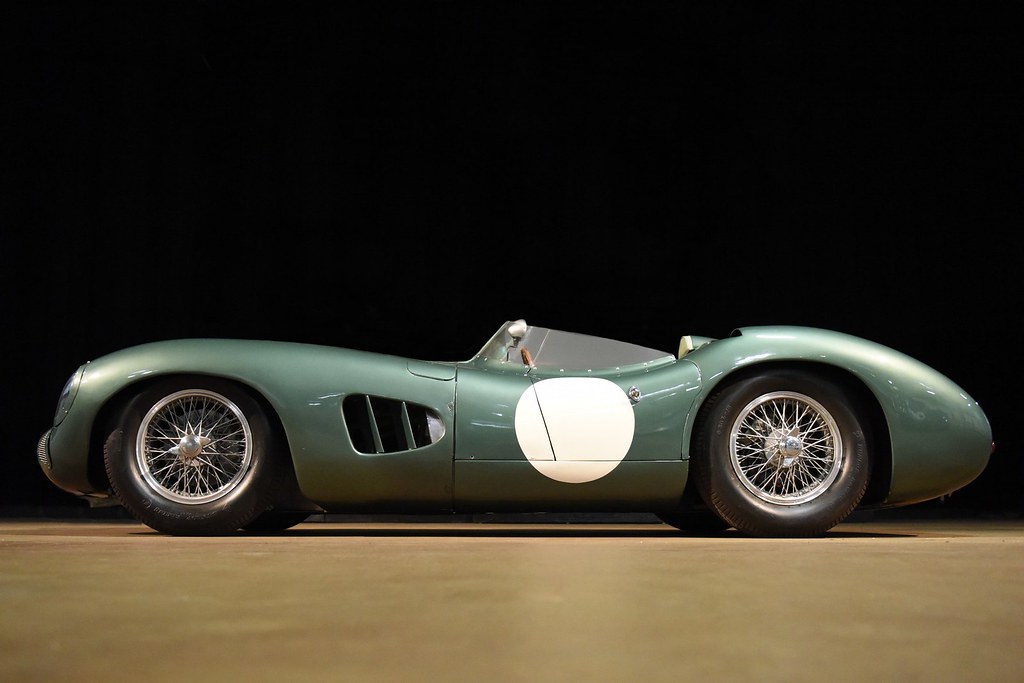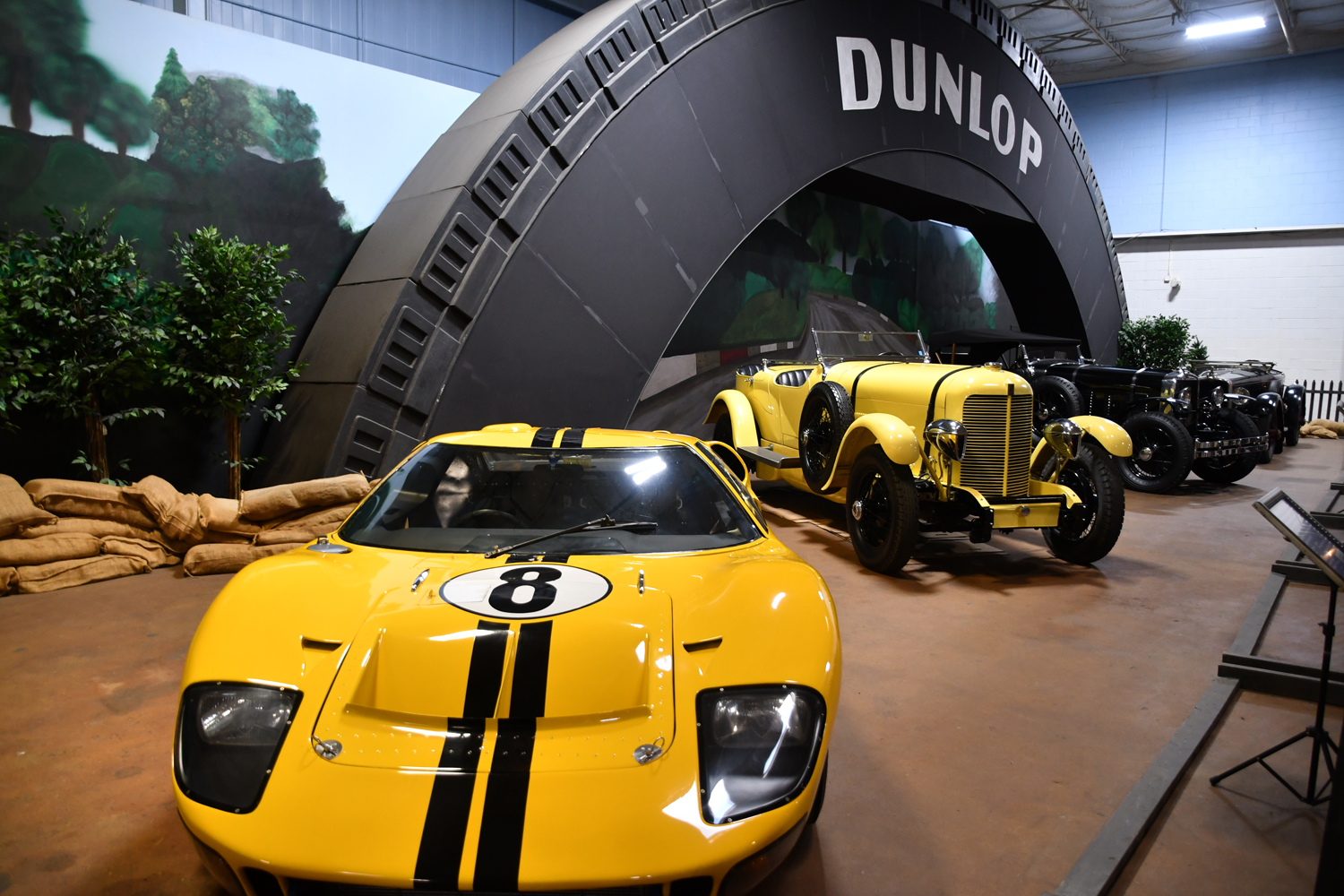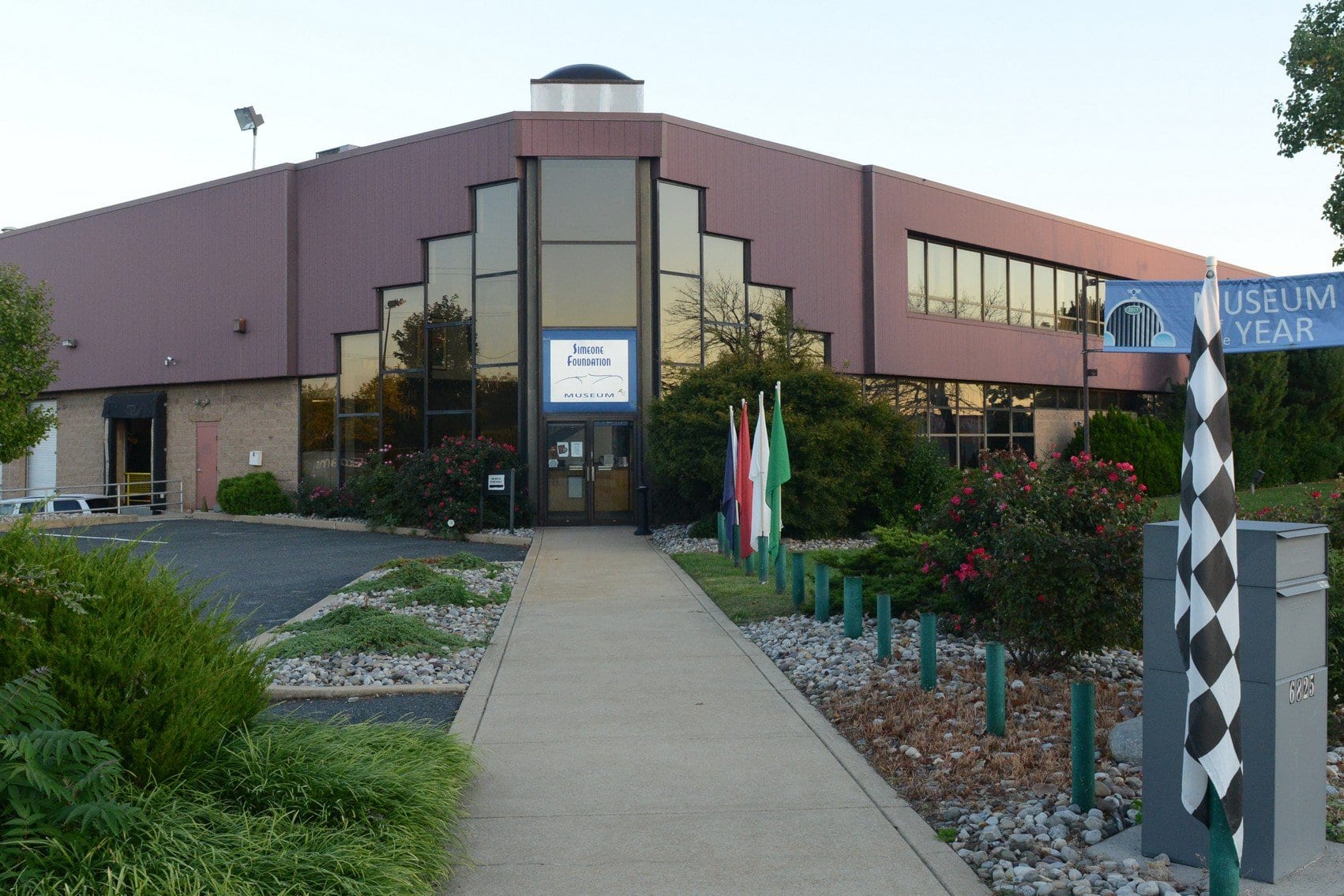Cars We Love & Who We Are #33
Like a blue ribbon bloodhound tracking a scent, Dr. Fred Simeone possessed a remarkable ability to sniff out a trail of ownership regardless of how faint the trace. He employed the brilliance, tenacity and ferreting instincts that distinguished history’s great sleuths in his unearthing of long lost historically important car provenance.
Clearly, Dr. Simeone’s love and passion for meaningful classic cars did not stop at the mechanical and aesthetic wonder of the automobiles he owned and cherished, as well, he passionately embraced the pursuit of their accurate and detailed backstory.
He focused not only on the history of significant automobiles in his collection but extended his laser-like forensic curiosity to historically significant cars owned by others that suffered from gaps in time that demanded authentication.
What follows provides some of the detailed backstories unearthed for cars in the Simeone Museum.
Dr. Fred Simeone’s Mona Lisa car legacy, Part 2, Fascinating backstories of cars he preserved.

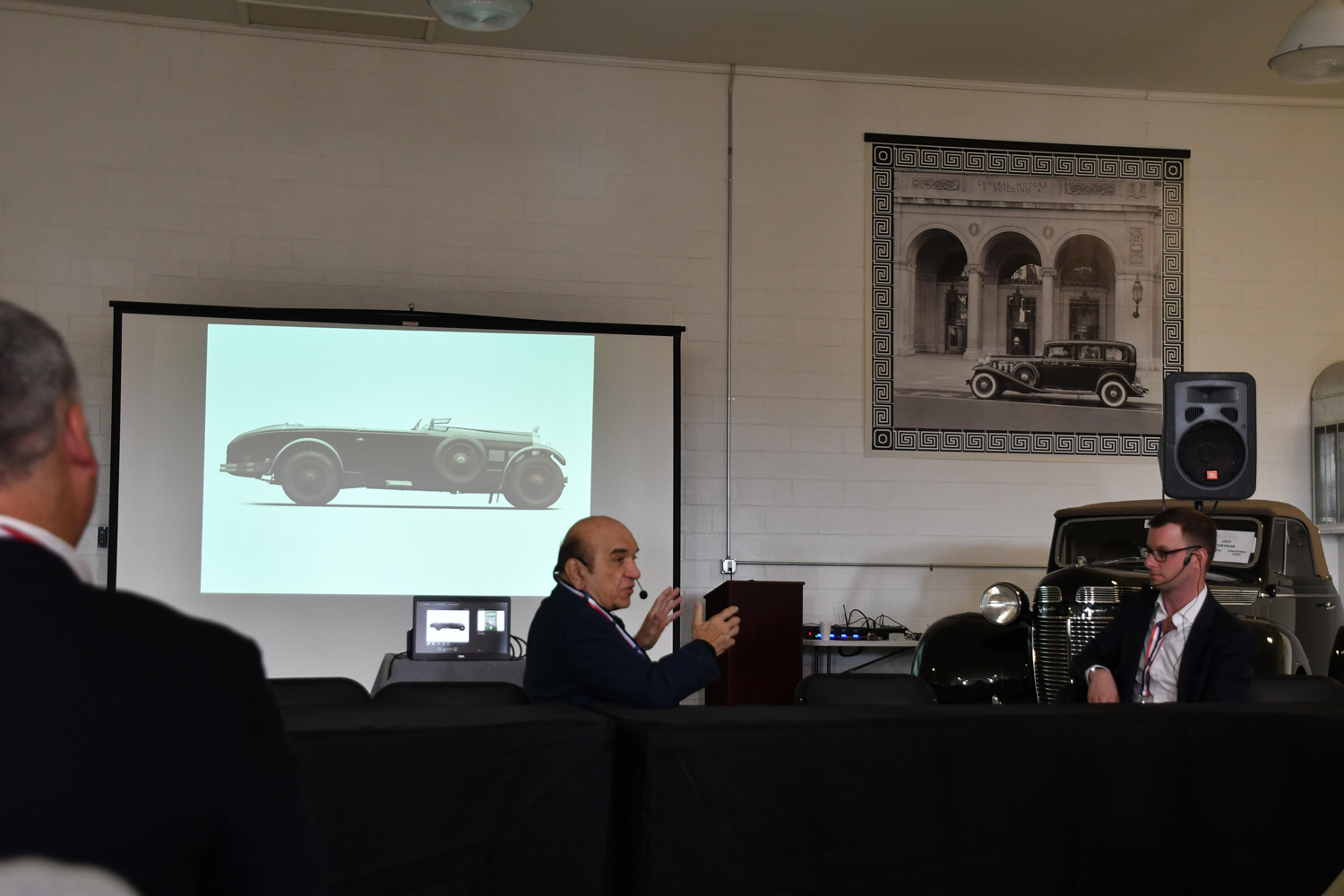
Dr. Simeone conducting a class on researching provenance
In authoring the preface to a wonderful book called The Stewardship of Historically Important Automobiles Dr. Fred Simeone wrote, “To those who believe an owner has the right to do whatever he wishes with his car in terms of use or modification, there is no need to follow another precedent. But to those who acknowledge that their preserved car has special significance as an example of the industrial age’s greatest gift, we suggest that you pass it on to future generations as it left the hands of its creators.”
In creating what many consider to be the finest automobile museum in the world, Dr. Simeone amassed and curated a pantheon of historically significant vehicles from the 20th century and cared for each with a brilliant consistency faithful to his written words. History in general and the automobile culture in particular are far better for it. As shared by Simeone Museum Director of Programs Harry Hurst, the following stories illustrate the value as an historic record and teaching tool afforded future generations by Dr. Simeone’s unwavering dedication to preservation.
1909 American Underslung
One of the Simeone Museum’s oldest cars on display, a 1909 American Underslung visually distanced itself from the constellation of new automobile marques fighting for life in the frantic automobile market of the early 20th century. Even though it belonged to the early iteration of “new car” offerings it stood out, even to this day, for a decidedly sporty stance. Its intention to be a worthy competitor in racing events demanded the ability to traverse high crowned rutted roads, ford streams and successfully face obstacles like tree stumps. Such were the challenges commonly encountered in its day because race tracks had yet to be built. Courses for races instead extended from city to city.
By positioning the chassis below the axles for a performance oriented lowered center of gravity, it gained superior handling, a sporty visual signature and its product name. Use of tall 40-inch tires afforded ample road clearance by compensating for the lowered center of gravity.
The Simeone model features a 571 cubic inch engine producing 60 horsepower. When new, it sold for around $4,000 at a time when the average American worker earned roughly $400 a year. Its comprehensive backstory comes courtesy of the work of Walter Seeley an Underslung enthusiast who starting in 1960 dedicated over a decade of his life to fleshing out this cars history going back to its original owner Mr. F.C Deemer a coal baron from Brookville, Pennsylvania.
As an early milestone in competition design, Harry Hurst compares it to the Ford GT40 as marking one hundred years of progress saying, “the Underslung had 40-inch tires, a century later the Ford GT40 barely stood 40-inches tall, period.”
1921 Duesenberg 183 Grand Prix

Sometimes life places something so close that you do not recognize what stands before you. Such was the case with the Simeone 1921 Duesenberg. Originally purchased off a Philadelphia used car lot by Dr. Simeone’s father and “car guy,” Dr. Anthony Simeone, neither father nor son considered anything about the race car as representing something uniquely special. It had been painted yellow and raced locally years back before being pushed into a corner of the dimly lit downtown parking garage where Simeone cars had been stored well before the museum became a reality. Hurst says, “Years back Dr. Simeone had invited Jay Leno to visit the parking garage to see the collection. Accompanying Leno happened to be Randy Ema, probably the world’s foremost expert on the Duesenberg. As they passed by the dimly lit resting place of the ’21 Duesenberg Ema says, “Well Fred you might want to rethink this car.”
Surprised at Ema’s comment about a car that had languished in his own garage, Dr. Simeone quickly drilled down. Hurst says, “Ema expertly applied his jeweler’s eye to the seemingly unremarkable Duesenberg.”
According to Hurst, Ema called out a number of things that distinguished this Duesenberg in significant ways. Right off the bat Ema flagged the existence of a cutout on the passenger side of the cowl being extraordinarily rare, its purpose to afford a riding mechanic a place on which to hold. Furthermore this car featured four-wheel brakes, a feature not found on cars raced on American tracks. Cars racing in America only had rear-wheel brakes because in America drivers only used brakes when coming in for a pit stop not when racing. Adding to its rarity, this Duesenberg had hydraulic brakes and no Duesenberg in 1921 came equipped this way except…the four Duesenbergs entered in the 1921 French Grand Prix. While not the Grand Prix winning car, the Simeone Duesenberg stands alone as the only original Duesenberg remaining of the four entered in 1921 French Grand Prix. Very special after al1.
1963 Corvette Grand Sport
It smoked engineers at GM that Shelby’s 289 Cobras ruled the roost on GT world championship race courses aroundthe world and at home while GM management had a strict ban on racing. Burning brightest with frustration Corvette godfather Zora Arkus-Duntov would have none of it and built an internal skunk works that raced cars though private teams. As well, with some backdoor funding support from pro-racing Chevrolet General Manager, Bunkie Knudson, Arkus-Duntov assembled the “Project Lightweight Program” that would spawn the legendary 1963 Grand Sport Corvette. Over 1000 pounds lighter than a stock Corvette, fitted with a 377 cu. in. 480 horsepower aluminum Chevy small block and just about every performance tweak on Arkus-Duntov’s Christmas list the Grand Sport was born a beast. And quickly died one. December 1963 in Nassau, Bahamas proved to be a hot time for Carroll Shelby’s Cobras, too hot. Too hot, as well, for the Corvette Grand Sport. In the only time when the Grand Sport and Cobras competed directly, the Grand Sports crushed the Cobras and everything else including Ferrari’s GTOs. Everyone noticed including GM management who, now aware of Arkus–Duntov’s sidestepping their racing ban, shut down the Project Lightweight Program for good. All Grand Sports quickly went to private owners.
GM sold Grand Sport 002 to Roger Penske. Penske sold it to his friend George Wintersteen. As an interesting side bar for all car enthusiasts who wished they had not sold “that” car years back. You know, the one that in recent years has sharply appreciated. Well, Wintersteen recalls selling 002 in 1967 for the princely sum of $6700. Grand Sport 002 then passed through the hands of a number of respectful owners until being purchased by Jim Jaeger, the co-creator of the Escort Radar Detector, in 1990. In 2008 002 became part of the Simeone collection. Today 002 stands as the only 1963 Corvette Grand Sport never to have been restored and, as such, contains a wealth of unique historic information.
Interestingly it has been conventional wisdom that a total of five Grand Sports existed. But wait. Apparently even world renowned museums can be in for a surprise. Hurst said that recently he had been in contact with John Mecom who owned the Grand Sports that raced at Nassau in 1963. Hurst says, “Mecom confirmed to me that the total stable of Grand Sports numbered six and he had a photograph of the six 1963 Corvette Grand Sports.
1964 Shelby Cobra Daytona Coupe
“Mona Lisa car”, the phrase honors a special vehicle for its unique achievement as a one-of-a-kind automobile. The Simeone Cobra Daytona Coupe CSX2287 merits the honor as the Cobra Daytona Coupe prototype, the only one built in the United States, the first to race at Daytona where it earned its name, the last to race in competition and in 1965 owner of 23 land speed records. Today, it ranks as the first automobile listed on the National Historic Vehicle Registry. It also had, for a period of thirty years, been lost.
After being retired by Ford when it turned Carroll Shelby’s attention to the GT40, the effort to sell these “old used” race cars met with little interest. They sat unloved in a corner of Shelby’s shop for years. CSX2287 finally found a buyer Jim Russell. Sale price $4,500. Ownership then passed on to “Wall of Sound” music produced Phil Spector. Advertised price $12,500. Spector became dissatisfied with its race track personality and manners but put off by the cost to “civilize” CSX2287. Now, as a disenchanted owner with a fistful of speeding tickets, he sold the Cobra to George Brand his body guard in 1971. Word had the purchase price at around $1000.
 Later on Brand gave the car to his daughter, Donna O’Hara. In 1982 O’Hara and her husband divorced with Donna O’Hara getting the Cobra. At that point O’Hara went off the radar as did CSX2287. Stories told include many offers including one from Carroll Shelby being ignored or rejected. At times O’Hara gave mixed signals as to the existence of the car. In 2000, still possessing the Cobra and without leaving a will, O’Hara died. Through the courts ownership passed on to her still living mother Dorothy Brand. Without the space or interest in untangling the subsequent decade of convoluted legal wrangling leave it to say that CSX2287 entered the Simeone collection where it sits on display today.
Later on Brand gave the car to his daughter, Donna O’Hara. In 1982 O’Hara and her husband divorced with Donna O’Hara getting the Cobra. At that point O’Hara went off the radar as did CSX2287. Stories told include many offers including one from Carroll Shelby being ignored or rejected. At times O’Hara gave mixed signals as to the existence of the car. In 2000, still possessing the Cobra and without leaving a will, O’Hara died. Through the courts ownership passed on to her still living mother Dorothy Brand. Without the space or interest in untangling the subsequent decade of convoluted legal wrangling leave it to say that CSX2287 entered the Simeone collection where it sits on display today.
1927 Mercedes-Benz Sportswagen S-Type
In 1927 Mercedes-Benz built eight Sportswagen S-Type sports cars produced under the direction of Ferdinand Porsche. Powered by a 6.8-liter, overhead cam, and supercharged inline-6 engine delivering 180 horsepower and with four-wheel brakes, this, then, state-of-the-art sports car dominated the track at its introduction. Entered in the first German Grand Prix in 1927 at the newly completed Nurburgring Race Track, these works cars finished first, second and third. Today, only one of the eight Sportswagen S-Types still exists. That sole remaining car, driven by race winner Otto Merz, now resides in its original race condition at the Simeone museum. An interesting piece of historic trivia, Race winner Otto Merz had been a chauffeur driving in Archduke Ferdinand’s motorcade when the archduke was assassinated sparking World War I.
A cash-strapped Mercedes-Benz’s earmarked the Nurburgring winning Sportswagen (33679) for sale in the United States. After the sale to a New York buyer fell through, it shipped 33679 to Mercedes-Benz Motor Company, 6063 Sunset Boulevard in Los Angeles for a quick sale to a Mr. Baldwin in 1928. An information gap then occurs with the trail being picked up around 1934 with confirmation of its ownership by a Mr. Robert Day of Beverly Hills. Day sold the car to Mr. Fred Torsen from whom it was purchased by Mr. Bayard Sheldon. Sheldon a long time owner drove the car extensively including a coast to coast cross country adventure. In 1973 Mr. Ben Moser purchased 33679. Despite intending to enjoy long term ownership in 1975 life got in the way for Moser and 33679 entered the Simeone Collection.
1952 Cunningham C4R Roadster
A story, both humorous and telling, as recalled by Director of Programs Hurst evidences Dr. Simeone as a man of scrupulous integrity and honesty. It involves the Cunningham C4R displayed as the winner of the 1953 Pillar of integrity and honesty
Prior to Ford’s 1960s GT40 program, Briggs Cunningham stood as the driving force behind the post war effort to win as an American builder racing at LeMans. The handsome Briggs Weaver designed, 325 horsepower Chrysler hemi V8 powered C4R proved to be the pinnacle of Cunningham’s effort to win Lemans. Cunningham produced three C4R cars. In all the events they entered the three cars they won 74% of the races entered and finished 84% of the races they started. Their success convinced Cunningham the C4R would be his ticket to victory at Lemans. It would not be so with Cunningham’s highest finish at LeMans believed to be 3rd.
The Simeone collection’s Cunningham C4R offers compelling proof that provenance can never be assumed no matter how sound the supporting evidence. The following information comes from Dr. Simeone’s writings on the Simeone Museum website describing his research confirming the authenticity of his Cunningham C4R.
Dr. Simeone possessed the ad from the October 1954 Road and Track magazine placed by Alfred Momo the race preparer for Cunningham advertising for sale the C4R, now in the Simeone Collection. The ad represented the car as both the 1953 Sebring winner and the third place finisher in the 1954 LeMans. Purchased by noted driver Charles Moran Jr., it participated in 1955 and 1956 SCCA events with both Moran and Fred Wacker driving. With the passing of Moran the car sold at an April 25, 1970 Parke-Benet auction. The auction catalog described the car as the 1953 Sebring winner. In subsequent years the C4R raced in vintage events frequently bearing the number 57 worn by the 1953 Sebring winner.
Tiny Gould, a dealer, placed the winning bid at the Parke-Benet auction before passing the car along to Warren Collins. The subsequent string of ownership included Henry Faulkner and in 1983 Robert Williams. During William’s period of ownership he drove in 1984, 1986, 1987 and 1988 Mille Miglia retrospectives. During these events co-drivers included renowned drivers Augie Pabst and John Fitch. Following the 1988 Mille Miglia event a restoration was performed with intense vigilance over authenticity. Subsequently after appearing in racing and show events the C4R joined the Simeone Collection. This brings us to one day when years later Dr. Simeone walked into Hurst’s office with a fuzzy black and white photo.
Hurst says, “Fred asks can you blow this up?” Hurst scans the photo, blows it up, performs a little Photoshop clean up and delivers the enhanced photo. It’s clear enough to make out that it’s the Sebring C4R.” It has number 57 on the side in masking tape. Hurst remembers Dr. Simeone asking him to count the number of side louvers on each car. Hurst says, “I count the two rows of louvers on the car in the photo. 1,2,3,4,5,6,7,8,9 and 1,2,3,4,5,6,7,8. We are standing by the museum’s C4R. I count both rows. 1,2,3,4,5,6,7,8,9 and 1,2,3,4,5,6,7,8 – 9. WOW!” Now both start looking at other little things, differences that nobody ever noticed over the last half century. It becomes clear the Simeone car did not win Sebring. Hurst says, “Fred and I are the only two people on earth that have this realization. Do you realize what happens to the value of a car when it goes from being a winner at a major race like Sebring to only having a class win at ’54 LeMans? It is significant. And Fred looks at me and simply says, I guess we‘re going to have to change the sign.” Hurst says, I swear to God that was Fred in a nut shell. He was rigorously honest.”
1938 Alfa Romeo 8C2900B
When asked to name his favorite car, Dr. Simeone would not hesitate. The 1938 Alfa Romeo 8C 2900B owned his very enthusiastic heart.
Hurst tells a story on himself. Walking through the old downtown garage that housed the Simeone Collection before the creation of the museum, Hurst remembers walking with someone possibly Ken Gross, if not Gross then someone very knowledgeable. Hurst says, “As we pass the Alfa Romeo 8C2900B sitting in the shadows my walking companion comments that this may be the most valuable car in the world.” Hurst continues saying, “Now considering that the Mercedes-Benz Uhlenhaut Coupe went for $140 million I have no idea what the Alfa would bring.”
Winner of the 1938 Mille Miglia, Alfa Romeo’s 8C2900B towered as a technological and aesthetic wonder for its time. It wrapped the beautiful body by Carrozzeria Touring around an engineering tour-de-force including a 180 horsepower 2.9-liter inline 8-cylinder with double overhead valves, double overhead cams, twin superchargers, independent four-wheel suspension, a transaxle, and suspension dampers that were adjustable from the driver’s seat!
Alfa Romeo entered four 8C2900Bs in the 1938 Mille Miglia. Simeone Museum’s Chassis number 412031 driven by Clemente Biondetti won with a record setting time that lasted for 15 years.
In 1986 Dr. Simeone had his heart set on driving his 8C2900B in the Mille Miglia. Technicians worked feverishly to get the automotive love of his life ready on time. With his beloved classic Alfa prepared to perfection Dr. Simeone proceeded to arrange shipping. Hurst relates the story saying, “Because of its value Fred sought insurance for its transportation. The insurer responded with a breathtakingly steep premium. Fred then asked how the car would be shipped. It will be flown over came the response. Fred asked if it would be a commercial jet. The answer came back, yes. Fred responded by declining the insurance and booking a seat on the same flight saying if it crashes, I won’t care.”
